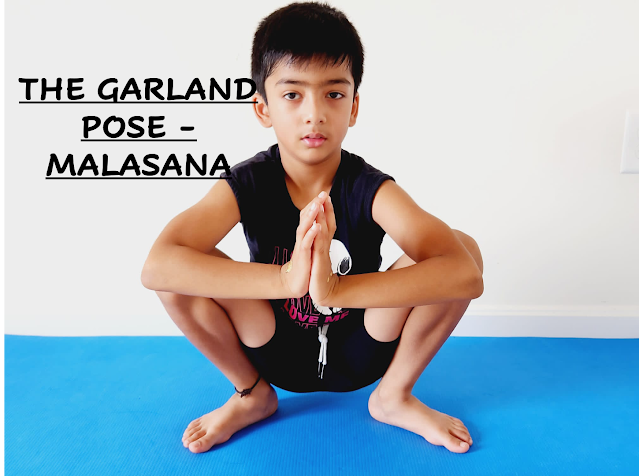DOWNWARD DOG YOGA POSE
One of the most recognized yoga pose, Downward-Facing Dog - Adho Mukha Svanasana - is a standing pose and mild inversion that builds strength while stretching the whole body. It's named after the way dogs naturally stretch their entire bodies! Downward-Facing Dog (also sometimes called "Downward Dog" or just "Down Dog" is an essential component of Sun Salutations and is often done many times during a yoga class. It can be used as a transitional pose, a resting pose and a strength-builder.
HOW TO DO
- start in an all four position, with your hips above your knees and shoulders above your wrists
- bring your hands slightly forwards of your shoulders, with your middle finger pointing forward, spread your fingers
- think about creating a suction cup in the middle of your palm by pressing through the outer edges of the palm, the base of the fingers and the fingertips. This is called Hasta Bandha
- create a spiral action in your arms by rolling your upper arms away from you and your forearms spiralling inwards
- tuck your toes under, and on an exhalation, engage your lower belly drawing the navel back to the spine. Press through your hands and lift your hips back and up to bring yourself into an upside-down V pose
- keep your knees bent at first as you find length in your spine
- slide your shoulder blades down along the spine, collar bones spread. the base of the neck relaxed
- maintaining length in the spine, 'walk your dog' by alternate bending and straightening your legs. Eventually brining both heels towards the floor. they do no have to touch the floor
- stay for 5 breaths
- to come out of the pose, bring your knees back down to the floor and come into child's pose or transition into a lunge by stepping one foot towards your hands
DURATIONS OF HOLD
- Beginners : 20 - 30 seconds
- Intermediate : 30 sec - 1 minute
- Advanced: 2 minute
BEGINNERS' TIPS
when done correctly, downward dog can greatly benefit the whole body. keep the following information in mind when practicing this pose:
- if you are very flexible, do not let your rib cage sink toward the floor. draw your lower ribs in and maintain a flat back
- it's more important to keep length in the spine than straight legs. so if you find you are rounding in your back or your hunching your shoulders it's fine to keep the knees bent as much as you need to so you can enjoy the stretch in your back. And remember your heels don't need to touch the floor!
- the spiral action of the arms can be tricky at first so try it while you are sitting on your heels
- you can work on the pose by practicing against a wall. stand facing the wall about a metre or 3 feet away with your legs hip distance apart. place your hands on the wall. walk your hands down the wall until your torso and arms are parallel to the floor
BENEFITS
- strengthens the whole body - upper body, arms, shoulders, abdomen and legs
- stretches the back of the body, ankles, calves, hamstrings, spine
- calms the mind
- stimulates blood circulation
- downward dog is a great pose to rest the spine between the strong backbends and forward bends
- with practice, downward dog can eventually become a rest pose to help you reconnect with your breath during strong vinyasa or astanga yoga classes
WATCH OUT FOR
- make sure the knuckle of the first finger is firmly pressing down, to protect your wrists
- shift your weight back into the hips
- if you are hyper-mobile, avoid locking your elbow by keeping a micro-bend in your arms
- check if you are hunching up your shoulders - try nodding and shaking your head to keep the base of your neck relaxed
BE MINDFUL
- avoid this pose if you suffer from an injury to your wrists, shoulders or ankles or if you have high blood pressure
- do not practice downward-facing dog if you have severe carpal tunnel syndrome or are in late-term pregnancy
- always work within your own range of limits and abilities. if you have any medical concerns, talk with your doctor before practicing yoga
VARIATIONS
since downward facing dog is performed so often during ashtanga, vinyasa and power yoga classes, it's important to learn how to do it correctly to avoid injury and fatigue. try these simple changes to find a variation that works best for you.
- to begin warming up and stretching the hips, bend one knee while keeping the other leg straight. change sides and repeat five times
- to correctly learn the spine lengthening aspect of downward dog, first bend your knees in the pose, coming on to the balls of your feet. bring your shins parallel to the mat and keep your sit bones lifting high and back, press your hips toward the wall behind you. then, slowly begin to straighten your legs
- for a greater challenge, lift your right leg as high as possible, reaching through the heel. keeping your right leg lifted, extend your left arm behind you. rest the back of your hand on your low back, repeat on the other side
- for a restorative version of the pose, place a yoga block under your head. release all neck tension. hold for up to five minutes
- place a yoga block between your inner thighs to learn the environment of inner rotation. grip the block with your thighs and press it toward the wall behind you as you hold the pose
similar poses,


























0 Comments